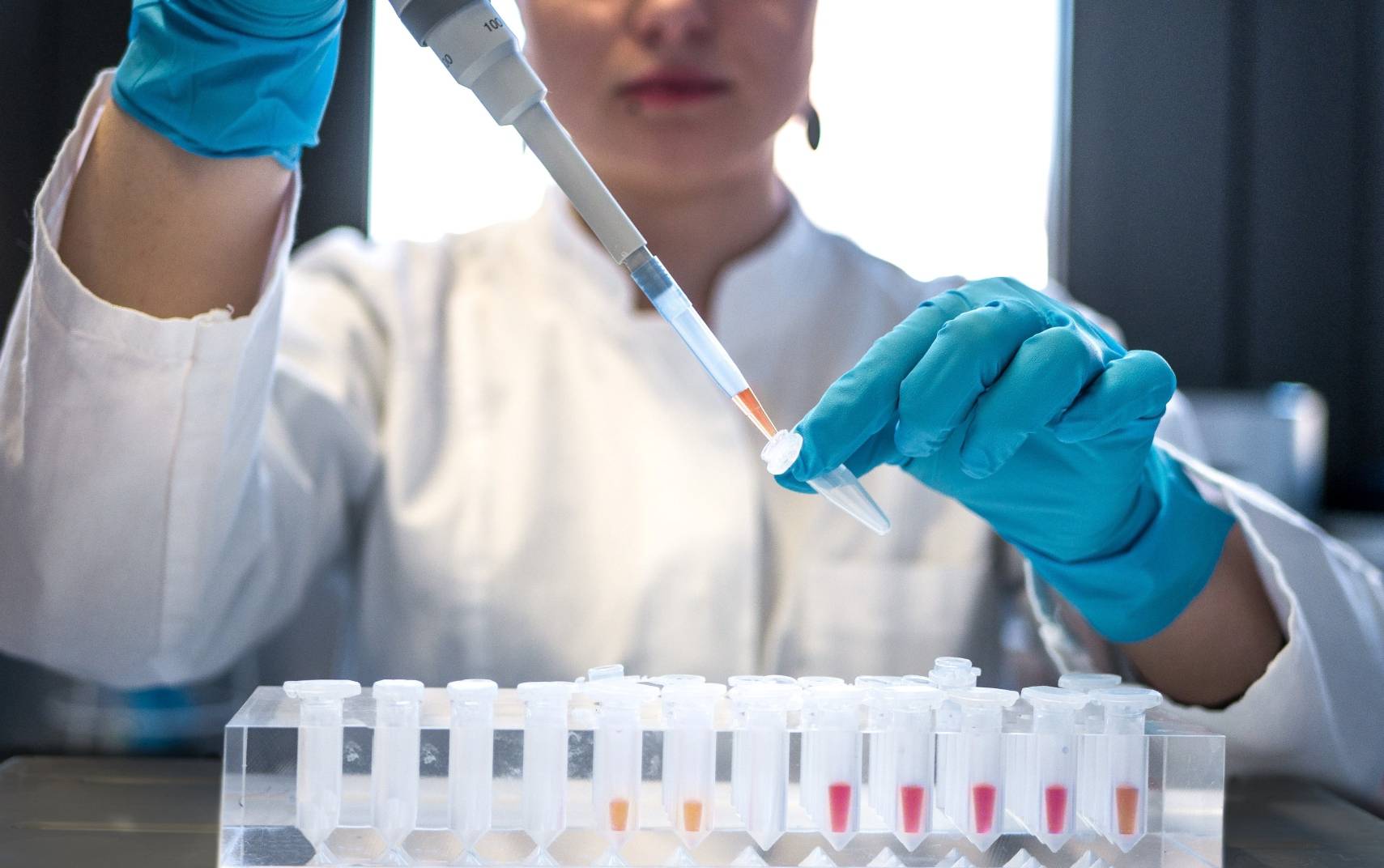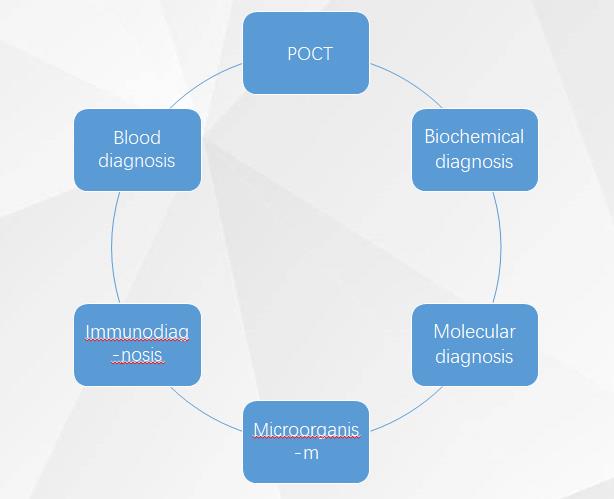release time:2023-05-17 16:22:25
In vitro diagnosis plays a vital role in clinical treatment by providing crucial diagnostic information, making it an essential tool in both human and animal medicine. Veterinary health screenings, disease diagnosis, preoperative testing, and disease monitoring heavily rely on in vitro diagnostics. The Seamaty SMT-120VP Vet Chemistry Analyzer is a specialized veterinary blood chemistry analyzer designed for the animal health industry. It offers a wide range of sample compatibility, including whole blood, plasma, and serum, and enables multiple tests on each sample, providing up to 24 parameters in a single test.

To ensure comprehensive animal health care and facilitate accurate treatment decisions, Seamaty has developed and updated a total of 39 diagnostic parameters and 13 reagent disc combinations for use with the SMT-120VP veterinary chemistry analyzer. When faced with such a wide array of vet chemistry reagent combinations, it becomes crucial to understand the appropriate clinical diagnosis selection.
Even seemingly healthy pets may harbor chronic diseases like diabetes, cancer, or heart disease. Regular medical checkups are essential to safeguard your pet's health.
Recommended tests:24 Comprehensive Test Plus, 16 Health Check Parameters.
Characteristic: This rotor with the most comprehensive parameters covers multiple biochemical groups such as liver, kidney, pancreas, myocardium, ion, protein, and metabolism, and can help veterinarians to diagnose diseases in all aspects It is often used for comprehensive test of disease and health. It is a cost-effective rotor for veterinary hospitals and pet owners.
Parameters: ALB, ALP, ALT, AMY, AST, Ca, CK, Crea, GLU, GGT, LDH, LPS, PHOS, TBA, TB, TC, tCO2, TG, TP, BUN, UA , A/G*, B/C*, GLOB*
(Note Parameters with * are calculated values.)
Characteristic: It's often used for disease screening, health examination and sterilization examination, which can help veterinarians make clinical diagnosis. This rotor involves liver function, kidney function, myocardium and blood lipids. Its also often used for comprehensive test during treatment( test every 3-4 days) and is suitable for felines and canines with obvious symptoms of liver and kidney damage. It can be preliminarily judged high or low blood calcium combined with total Ca and ALB.
Parameters: ALB, ALT, AMY, AST, GLU, CK, Ca, Crea, BUN, TB, TG, TP, PHOS, A/G*, B/C*, GLOB*
When your furry companion is unwell but unable to express their symptoms, the Seamaty veterinary analyzer can provide precise tests with results available in just 12 minutes.
Recommended tests: 12 Feline Inflammation, 6 Canine Inflammation, 10 Primary Diagnostic.
Characteristic: f-SAA( Feline serum amyloid A) is an acute phase protein, which is mainly produced by the liver. secreted during the acute phase of inflammation and the concentration of SAA will increase more during onset and recurrence, especially in the early damage of inflammation and tissue. In the early stage of feline suffering from infectious diseases, SAA has important significance in the identification of bacterial and viral infections, and is an important inflammatory indicator and prognostic marker for felines. At the same time, the rotor contains pancreas, kidney, liver and gallbladder parameters, which can comprehensively assess the felines physical condition.
Parameters: f-SAA, BUN, Crea, ALB, LPS, TBA, ALP, GGT, TP, A/G*, B/C*, GLOB*
Characteristic: C-CRP( C-reactive protein) is the main acute-phase reactive protein in canines and will rise in the presence of inflammation. Besides, it is much better at judging inflammation than white blood cells. Veterinarians mainly use it for assessing the severity of systemic inflammation and monitoring the effectiveness of treatment.
Parameters: AMY, Crea, LPS, BUN, C-CRP, B/C*
Characteristic: It can check the protein of liver and kidney, blood glucose metabolism. It's very helpful for canines and felines, especially canine sterilization, and it can be used for simple screening of acute and severe diseases and health examination. ALP can better assist veterinarians in judging pancreatic diseases.
Parameters: ALB, ALP, ALT, Crea, GLU, TP, BUN, A/G*, B/C*, GLOB
Surgical procedures come with inherent risks such as hemorrhage, anesthesia-related complications, ineffective coagulant drugs, cerebral thrombosis, or myocardial infarction. Seamaty's preoperative testing helps minimize these risks.
Recommended tests: 10 Pre-operative Test Parameters, 4 Coagulation Parameters, 16 Comprehensive Diagnostic Parameters.
Characteristic: It's often used to check whether the animal's physical sign is suitable for operation and used with the 4 coagulation parameters together which can greatly reduce the risk of bleeding, pain, and anesthesia during the operation. Transaminase is used to assess the function of anesthesia recovery, and help the veterinarians to confirm anesthetic dosage. LDH assesses myocardial indicators and prevents surgical risks such as shock during operation.
Parameters: ALP, ALT, AST, CK, Crea, GLU, LDH, TP, BUN, B/C*
Characteristic: Coagulation test has a wide range application in clinics, and often used to determine the blood coagulation function of animals before operation, as well as the poisoning and parvovirus test.
Parameters: PT, APTT, TT, Fib
Characteristic: It can be used to test liver and kidney function, blood glucose, K+ and Na+, etc. Therefore, meaningful for nephropathy monitoring and very helpful for the sterilization of felines and canines, and it also can be used for simple screening of emergency diseases and health check. Among them, the ALP can better assist veterinarians in the judgement of pancreatic diseases.
Parameters: ALB, ALP, ALT, AMY, CHE, K+, Na+, Crea, GLU, TB, TP, UA , BUA, A/G*, B/C*, GLOB*
Is the treatment proving effective? Are there any hidden infections post-surgery? Is the disease improving? Biochemical tests provide real-time information, enabling a clear understanding of the situation.
Recommended tests: 9 Kidney Function Parameters, 11 Liver Function Parameters, 13 Electrolyte Plus Parameters, 9 Diabetes Test Parameters, Ammonia Parameter.
Characteristic: By observing the clinical manifestations of the animals and testing, veterinarians can correctly determine pre-renal and post-renal azotemia. Especially for felines, as the incidence of renal disease due to lack of drinking water is higher in felines than in other animal. Cys C can rise rapidly in the early stages of kidney injury and is a sensitive indicator of kidney function. Currently, Cys C only will show the value if the sample is canine.
Parameters: ALB, Crea, Ca, GLU, PHOS, UA, BUN, tCO2, B/C*, Cys (canine)
Characteristic: Liver function is a required examination item for routine diseases, and the veterinarians can judge the cause based on liver function parameters accurately. TBA, ALP and GGT are very important for the detection of animal liver function and cholestasis.
Parameters: ALB, ALP, ALT, AST, GGT, TBA, TB, TC, TP, A/G*, GLC, GLOB
Characteristic: This rotor contains K+, Na+, Ca, Mg, CI-, pH and LAC indicators, which can provide a basis for supplementing electrolytes to maintain osmotic pressure and pH balance. It also can evaluate compensatory acid-base poisoning. In addition, for the diagnosis of diseases in large animals, adding Crea, BUN and GLU to form 13 Electrolyte Plus Parameters will have wider application scenarios.
Parameters: BUN, Ca, CI-, K+, Na+, Mg, PHOS, tCo2, pH, LAC, Crea, GLU, B/C*
Characteristic: Fructosamine can diagnose diabetes more accurately that has occurred in animals within the last 1-2 weeks, and it can also effectively rule out hyperglycemia caused by stress( especially felines). Through continuous monitoring of fructosamine( test every 7 days) can reflect the effect of insulin therapy effectively.
Parameters: ALT, AMY, AST, GLU, LPS, TC, TG, LAC, FRUC
Characteristic: The ammonia produced by the various tissues of the animal body in the process of amino acid metabolism and the ammonia produced by the decomposition of intestinal microorganisms, all can enter the blood to form blood ammonia. If the animal has weight loss, back muscle atrophy, rough hair and other symptoms. It needs to be checked for ammonia to find out if it is caused by elevated blood ammonia or kidney disease. The ammonia parameter is often used with 9 Kidney Function Parameters.
Parameters: NH3
|
Clinical Diagnosis Selection |
Recommended Tests |
|
Health checkups |
- 24 Comprehensive Test Plus. |
|
Disease diagnosis |
- 12 Feline Inflammation. |
|
Pre-operative checkup |
- 10 Pre-operative Test Parameters. |
|
Disease course monitoring |
- 9 Kidney Function Parameters. |
Seamaty's Commitment
As an actively engaged participant in the medical and animal diagnostic industry, Seamaty provides state-of-the-art point-of-care (POC) medical equipment worldwide. Our product range includes automatic biochemical analyzers, veterinary analyzers, chemiluminescent immunoassay analyzers, and reagents. With a global presence and partnerships in over 80 countries and regions, including Europe and the United States, Seamaty remains a pioneer in in vitro diagnostics (IVD). Constantly striving to lead the industry, they focus on cutting-edge technologies and aim to deliver superior instant diagnostic products to distributors and end-customers alike.
▼Click to watch the operation guide of Seamaty SMT-120VP▼

2022-09-23
Chemistry lab equipment is an essential part of any chemistry lab. Without it, conducting experiments would be difficult, if not impossible. There are many different types of laboratory equipment available, each designed for a specific purpose.

2022-06-24
Veterinary chemistry analyzers refer to laboratory machines used to assess the concentration of proteins, minerals, metabolites, and medicines in the specimens of plasma, blood, CSF, urine, serum and other bodily fluids.

2021-07-26
IVD (in vitro diagnosis) refers to the products and services outside the human body to obtain clinical diagnosis information by testing human samples (blood, body fluid, tissue, etc.), so as to judge diseases or body functions, so as to maintain the first market share in the medical device industry.